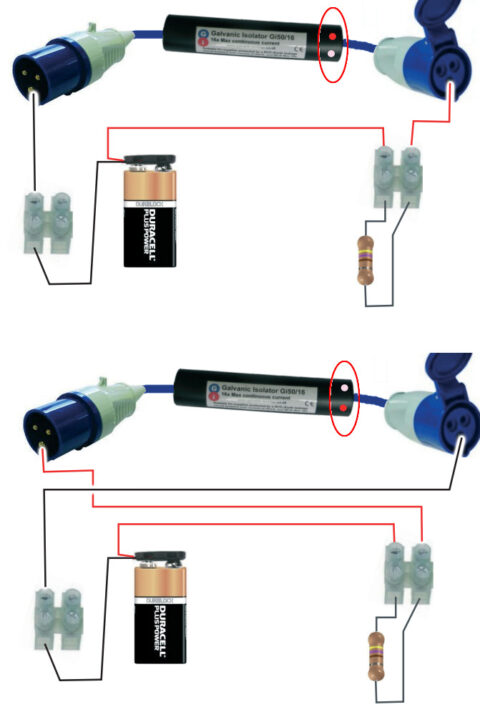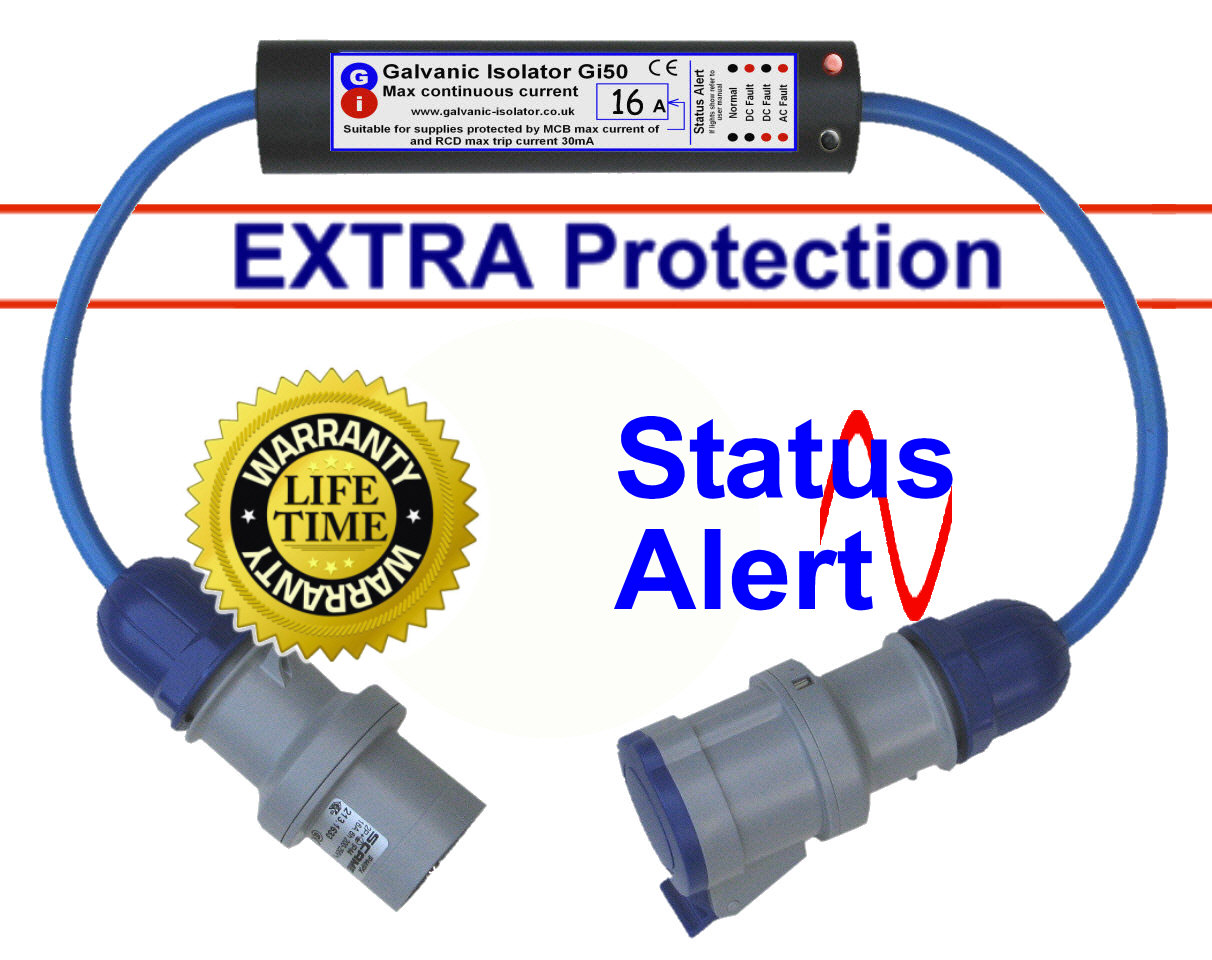
Ed Watt is the General Manager of the Galvanic Isolator Company
The easiest way to test a Galvanic isolator is using a simple multimeter, however the results can be tricky to interpret, and should be treated with caution, so if your isolator appears to fail, we'd suggest you return it to the manufacturer for testing.
You’ll need a good quality multimeter with Diode or Semiconductor Test setting - a diode symbol like the one in the photo. Not all multimeters are equal, and some that have the Diode Test setting may not be adequate for performing this test. Remember... this is not a definitive test. If your isolator "fails" we'd recommend that you have it tested by the manufacturer.
The Galvanic isolator must be completely disconnected before testing - it can not be tested whilst installed.
"Don't do a simple continuity check on a Galvanic Isolator - the results will be meaningless, as it has electronic components inside that require a special test procedure"
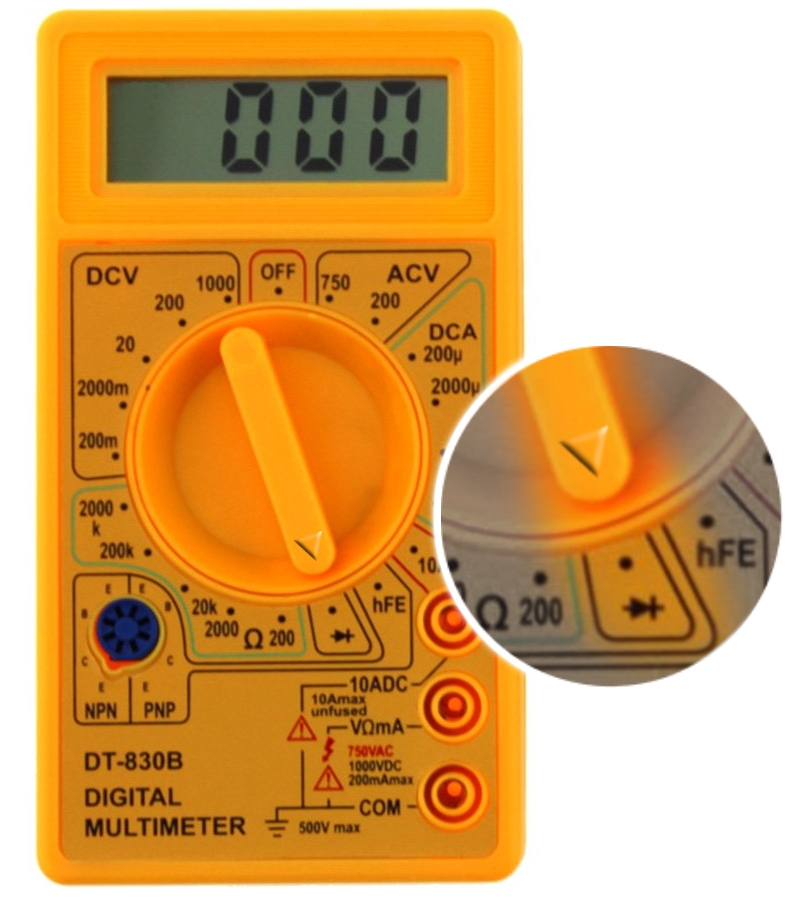
If you’re testing a Wire In Galvanic isolator, it’s really simple, because the connections are readily accessible. A Plug in Galvanic isolator is more tricky - because the earth terminal on the socket end is inset. It’s vitally important to get a really good contact between the multimeter and the terminals, or you could get unreliable results.
To help with this, it’s a good idea to attach a small crocodile clip to each of the multimeters probes, as shown in the picture.

Testing a Galvanic Isolator with Stud connections
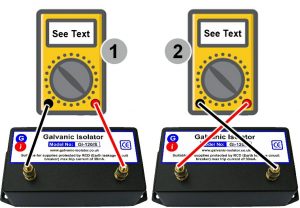 To test a Galvanic isolator with connecting studs...
To test a Galvanic isolator with connecting studs...
1). Set the multimeter to the Semiconductor Test or Diode Test position, and attach one crocodile clip to each stud. Wait 5 seconds then note the reading on the meter. The reading will typically be between 0.9 (Volts) and 2.5 (Volts).
2). Now reverse the connections. Wait 5 seconds then note the reading. Your Galvanic isolator is OK if the reading is similar (within about 10%) of the previous reading.
If the multimeter reading is not within the range above, or if the readings in both directions are different by more than 10%, your isolator MAY be faulty, and we’d suggest getting it professionally checked.
Testing a Plug In Galvanic Isolator
To test a Plug In Galvanic isolator, it’s necessary to extend one of the multimeter probes by clipping a thin terminal screwdriver to one of the crocodile clips (See photo). This will make it easier to connect to the socket end.
! Completely disconnect the isolator from the boat and the shore supply !
As you can see in the photo, the connections you need to check are the BIGGEST ones in the plug and socket - the ones nearest the locating nibs in the body of the connectors.
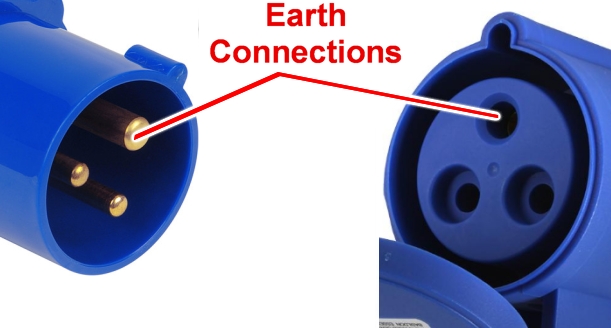
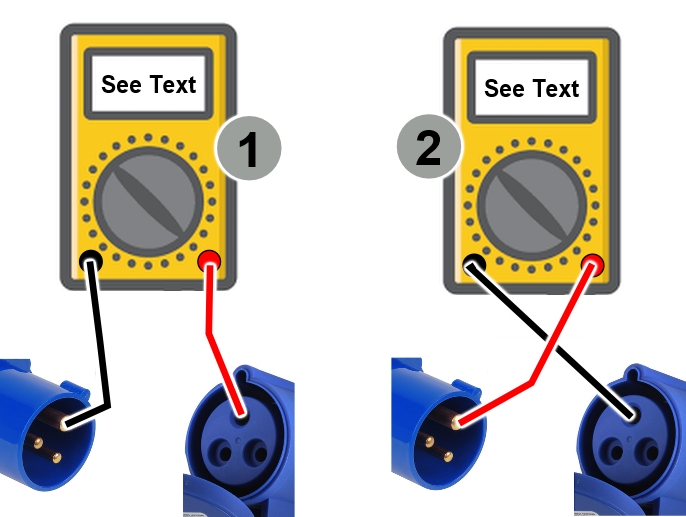
1). With the multimeter set to the Semiconductor Test or Diode Test position, connect one of the crocodile clips to the earth connection of the plug, and insert the terminal screwdriver into the earth connection of the socket, ensuring that it makes good contact with the metal connection in the hole. Wait 5 seconds then note the reading on the meter. The reading will typically be between 0.9 (Volts) and 2.5 (Volts).
2). Now reverse the connections, and wait 5 seconds. Your Galvanic isolator is OK if the reading is similar (within about 10%) of the previous reading.
If the multimeter reading is not within the range above, or if the readings in both directions are widely different, your isolator MAY be faulty, and we’d suggest getting it professionally checked.
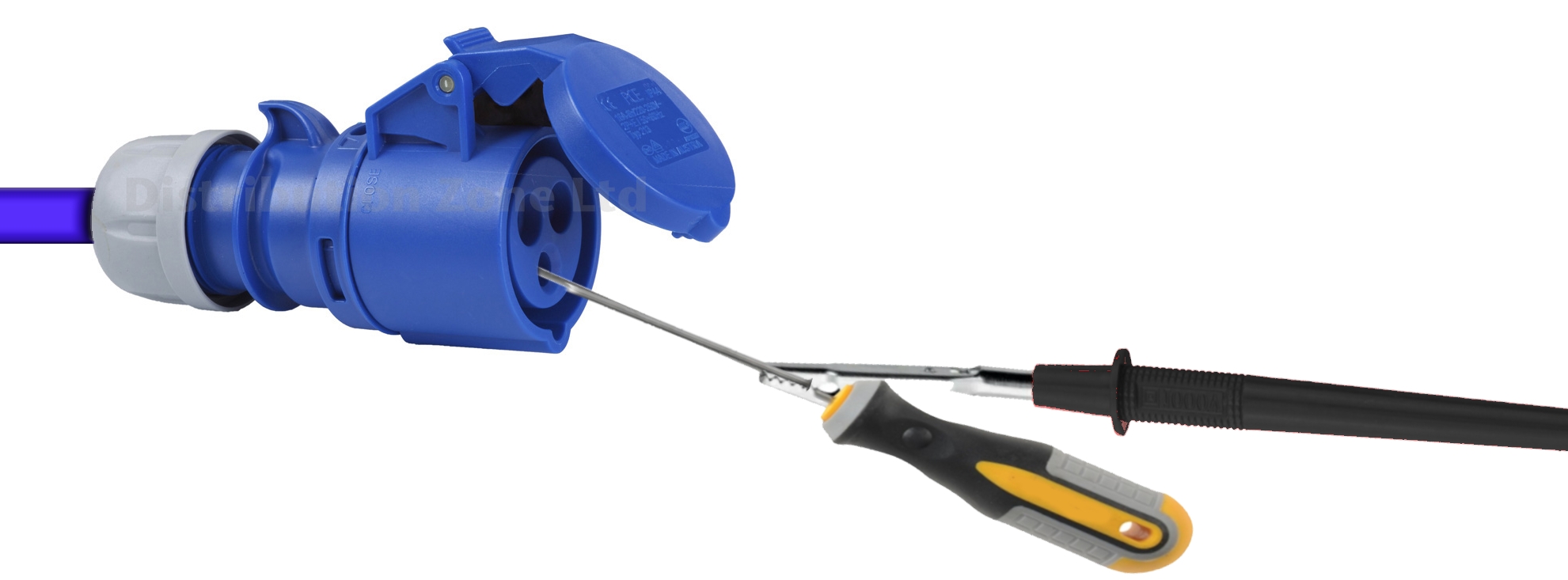
If you'd like to test the lights on one of our plug in isolators, here's how it's done...
Equipment required:
470 Ohm 1 Watt resistor
PP3 9 Volt battery
Connector strip
1m red flexible cable
1m black flexible cable
Method:
• Remove the isolator from the boat and from the shore connection
• Wire the circuit as shown in the diagram
• Ensure that the red and black cables are making good connections with the earth terminals of the
plug and socket. The earth is the largest terminal on the connector, as shown on the diagram.
• One (Either) of the LED should light.
• Connect the circuit as in bottom diagram (Simply reverse the red and black cable connections)
• The other LED should light
If you don't already have a Galvanic isolator, you almost certainly need one! Whenever you plug into an electric hook up, a Galvanic Isolator is essential! Below is a link to our most popular model. It just plugs into your hook up cable. No tools, no wiring - just plug it in.
For more information please Click Here

